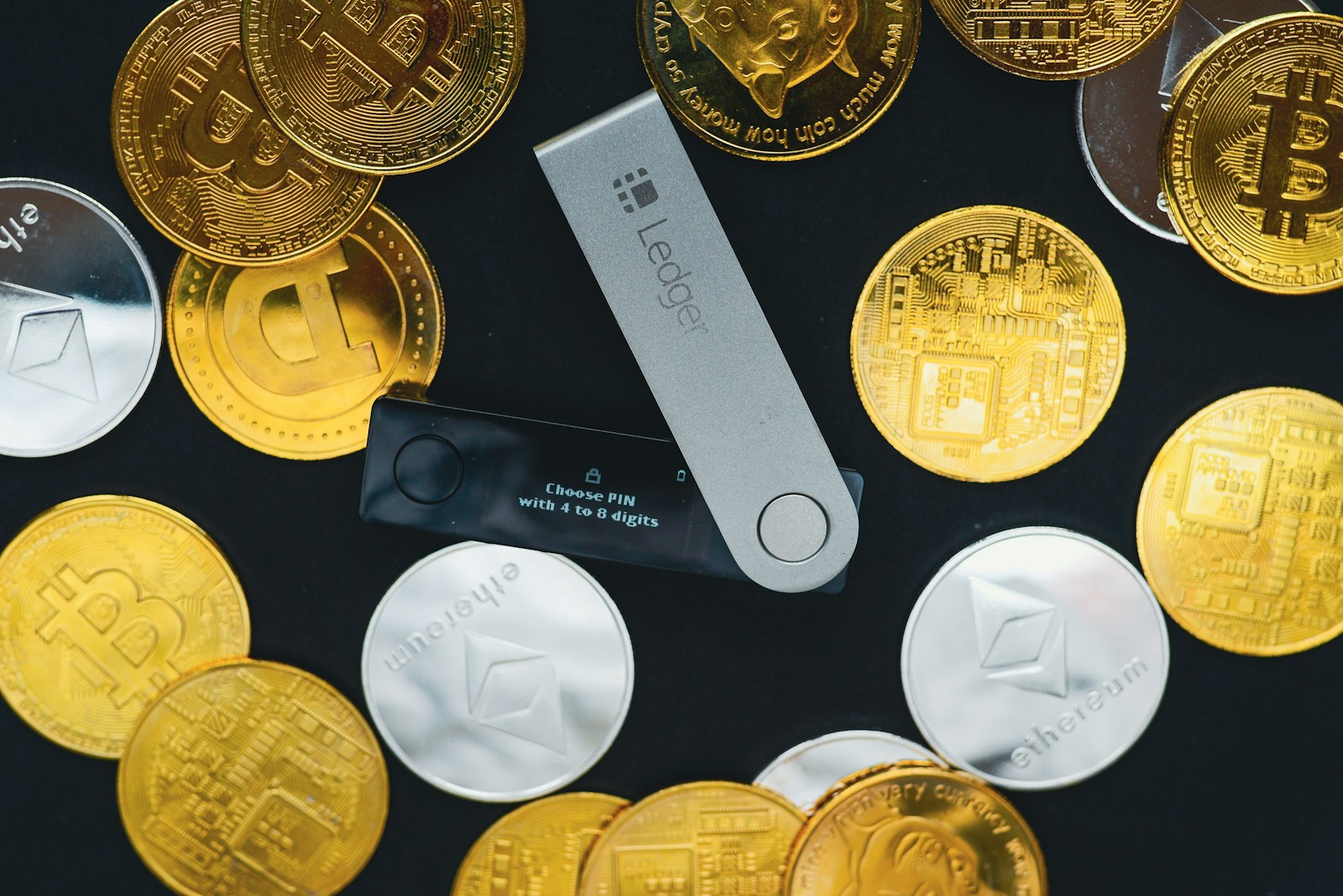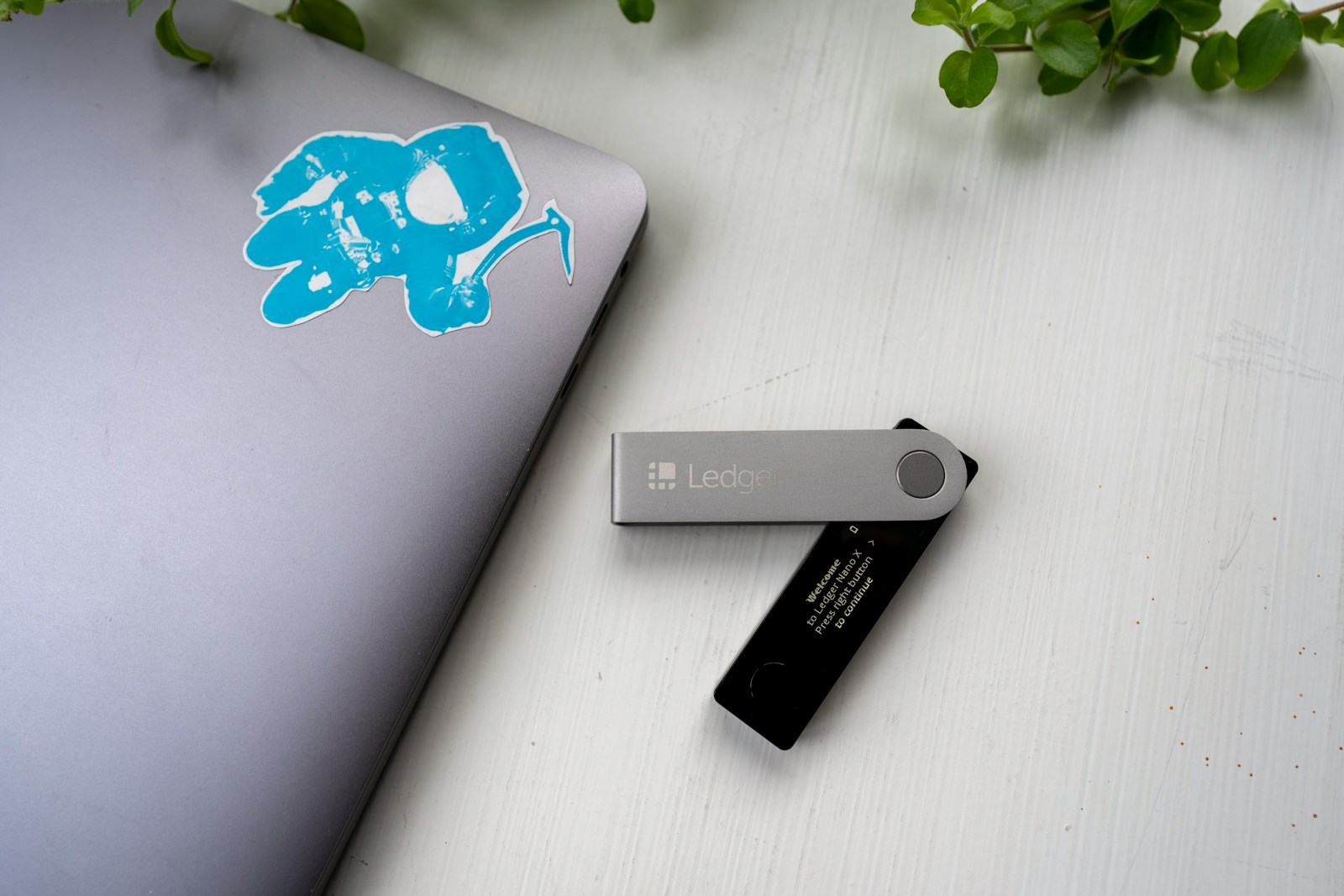
Use biometric authentication and strong PINs immediately. Devices equipped with fingerprint scanners or facial recognition reduce unauthorized access risks significantly. According to recent data, apps employing biometrics report 40% fewer breaches compared to those relying solely on passwords. Prioritize apps that integrate multi-factor verification to enhance protection layers on your handheld device.
The convenience of managing digital assets directly through an app on your phone comes with inherent vulnerabilities. Malicious software targeting these platforms increased by 65% over the last year, exploiting outdated operating systems and unsecured network connections. Always update your device’s firmware and app versions promptly to close known security gaps. Consider isolating asset management apps from other applications by using sandboxing techniques or dedicated user profiles.
Phishing attempts disguised as legitimate transaction requests remain one of the most prevalent threats. Recent case studies reveal that over 70% of successful intrusions involved users unknowingly approving fake permissions within their asset management tools. Vigilance during every interaction is crucial–verify URLs, scrutinize app permissions regularly, and never approve actions without cross-checking sender authenticity. Employing hardware-backed key storage can add an extra layer of defense against such exploits.
What about backup strategies? Storing recovery phrases securely outside your main device drastically reduces loss risks caused by theft or malfunction. Cold storage solutions or encrypted offline backups prevent total asset exposure in case the phone falls into malicious hands. In volatile market conditions, ensuring uninterrupted access while maintaining stringent protection protocols is not just prudent–it’s necessary for sustainable digital asset stewardship.
Mobile wallet security: protecting crypto on phones [Wallet & Security security]
Storing digital assets on handheld devices demands rigorous measures to mitigate exposure to theft and unauthorized access. The convergence of convenience and vulnerability requires users to prioritize multi-layered protection mechanisms, such as hardware-backed key storage and biometric authentication, to maintain asset integrity. In practice, securing private keys with Trusted Execution Environments (TEE) or Secure Elements (SE) embedded in modern smartphones significantly reduces the risk of compromise from malware or phishing attempts.
Recent analyses indicate that over 60% of mobile-based breaches stem from weak authentication protocols or outdated software versions. Incorporating regular firmware updates and leveraging advanced cryptographic functions like Hierarchical Deterministic (HD) key derivation enhances overall safety by limiting attack surfaces. Case studies from platforms employing these techniques demonstrate a marked decrease in successful intrusions, underscoring the importance of continuous system hardening.
Technical strategies for enhanced defense
Integrating end-to-end encryption alongside offline transaction signing mitigates exposure during data transmission phases. For instance, cold signing via QR codes or Bluetooth Low Energy channels minimizes online presence, thus lowering interception risks. Additionally, employing threshold signatures distributes control over funds across multiple devices or entities, offering resilience against single-point failures inherent in traditional setups.
- Biometric locks: Fingerprint scanners and facial recognition leverage unique physiological traits to prevent unauthorized entry while maintaining user convenience.
- Seed phrase management: Utilizing encrypted backups stored in hardware security modules prevents loss due to device failure without increasing susceptibility to remote hacking.
- App sandboxing: Operating systems isolate applications at runtime, restricting malicious code injection and cross-app data leakage.
The balance between user-friendly interfaces and robust protection often challenges developers; however, advancements like secure enclave processors now enable seamless execution of sensitive operations behind closed layers inaccessible even to the host OS. Such architectural improvements exemplify how modern handsets elevate trustworthiness beyond conventional computing environments.
Examining recent exploits highlights the evolving threat landscape targeting handheld asset custodianship. For example, the notorious SIM swap attacks exploit telecommunication vulnerabilities rather than device flaws directly but result in compromised two-factor authentication tokens crucial for account recovery procedures linked with asset repositories. Consequently, pairing device-specific safeguards with external identity verification processes is essential for holistic defense frameworks.
In conclusion, safeguarding cryptographic holdings on personal devices necessitates an integrated approach combining hardware innovations, stringent software practices, and vigilant user behavior. As decentralized finance expands its footprint through mobile channels, understanding technical nuances behind protection paradigms becomes indispensable for minimizing financial exposure without sacrificing operational efficiency or ease of use.
Choosing secure mobile wallets
When selecting an application for storing digital assets on a portable device, prioritize solutions with robust encryption protocols and multi-factor authentication. Applications utilizing hardware-backed keystores, such as Trusted Execution Environments (TEE) or Secure Enclaves, significantly reduce the risk of private key extraction even if the phone is compromised. For instance, wallets integrating biometric verification alongside PIN codes demonstrate a layered approach to access control, enhancing overall asset safety.
Evaluating the software’s development practices is also critical. Open-source projects benefit from community audits that can uncover vulnerabilities before exploitation occurs. Conversely, closed-source applications demand thorough vetting through third-party security audits and penetration testing reports. An example includes wallets audited by firms like Trail of Bits or Kudelski Security, which provide documented assurance against common attack vectors like memory leakage or replay attacks.
Technical factors influencing app choice
The integrity of data storage mechanisms within the application directly impacts protection levels. Apps employing deterministic key derivation methods compliant with BIP32/BIP44 standards allow users to recover assets securely without exposing sensitive data on the device. Additionally, cold storage functionalities–where private keys remain offline except during transaction signing–limit exposure to malware targeting real-time systems.
- Risk management: Wallets offering transaction whitelisting or spend limits minimize unauthorized fund transfers.
- Backup options: Secure mnemonic phrase handling ensures recovery capability without compromising confidentiality.
- User control: Non-custodial designs give full ownership over keys, eliminating centralized breach points.
Security updates frequency and developer responsiveness reflect an application’s resilience against emerging threats. A case study of prominent applications revealed those updating at least monthly reduced vulnerability windows by up to 40%, compared to sporadic patching schedules. Monitoring app store reviews and security bulletins provides insight into ongoing maintenance quality, critical in adapting to evolving attack methodologies targeting handheld devices.
The platform’s inherent safety features also contribute substantially to overall protection standards. Devices running newer operating system versions benefit from advanced sandboxing and permission controls that restrict malicious code execution within apps managing sensitive credentials. For example, Android’s SafetyNet API and iOS’s Secure Enclave technology serve as foundational layers preventing unauthorized access or tampering at the system level.
Finally, consider user experience elements that indirectly affect protection effectiveness. Complex interfaces may lead users to bypass security measures like setting weak passwords or ignoring update notifications due to inconvenience. Simpler authentication flows combined with informative prompts regarding potential risks encourage adherence to best practices in safeguarding digital funds on handheld devices.
Setting up strong authentication
Implementing multi-factor authentication (MFA) significantly reduces the risk of unauthorized access to a digital asset repository on a handheld device. Combining something you know (password or PIN), something you have (hardware token or smartphone notification), and something you are (biometric data like fingerprint or facial recognition) creates layered barriers that hackers must bypass. Notably, recent studies indicate that accounts secured with MFA experience 99.9% fewer compromises compared to those relying solely on passwords. While some users may perceive additional steps as detracting from convenience, modern authentication frameworks optimize usability through seamless biometric integration within the app ecosystem.
Password complexity remains fundamental despite advances in biometric methods. An alphanumeric passphrase with at least 12 characters, including symbols, significantly enhances protection against brute-force attacks targeting the application managing digital assets. However, passwords reused across multiple platforms exponentially increase vulnerability by expanding the attack surface. Incorporating password managers embedded in operating systems can mitigate human error and improve overall safety without sacrificing user experience on the phone.
Balancing convenience and security through app-level controls
The protective capabilities embedded within many asset management applications extend beyond initial login credentials. Features such as time-based one-time passwords (TOTP), device-specific authorization whitelisting, and automatic session termination after inactivity enhance defense mechanisms without excessive friction for legitimate users. For instance, Google Authenticator or Authy offer TOTP codes that refresh every 30 seconds, making intercepted codes obsolete rapidly. Additionally, restricting access to predetermined devices limits exposure if credentials leak but an attacker attempts login from an unknown endpoint.
Recent incidents illustrate how insufficient authentication setups led to significant losses: in early 2023, a high-profile theft occurred due to compromised single-factor verification combined with outdated app versions lacking biometric options. Conversely, organizations adopting hardware security modules (HSMs) integrated with mobile apps demonstrate improved resistance against phishing and malware exploits targeting handheld devices. As attackers refine techniques exploiting social engineering or malware injection on phones, robust authentication remains a cornerstone of maintaining integrity and trustworthiness of personal asset management solutions.
Managing private keys safely
Storing private keys directly on a phone demands robust measures to prevent unauthorized access. One practical approach is leveraging hardware-backed security modules embedded in modern devices, such as Trusted Execution Environments (TEE) or Secure Elements (SE). These isolated environments safeguard cryptographic operations and key storage from malicious apps or system exploits. For instance, Google’s Titan M chip and Apple’s Secure Enclave provide isolated zones where private keys never leave the protected area, significantly reducing the risk of extraction.
Using a dedicated app that integrates these hardware features enhances both safety and convenience. However, developers must ensure cryptographic best practices, such as encrypting keys with strong algorithms like AES-256 and employing proper key derivation functions (e.g., PBKDF2, Argon2) for password protection. According to recent research by NCC Group, applications failing to implement such layers expose users to credential theft even if the device itself is secure.
Key management strategies for enhanced protection
A common mistake is relying solely on software-based storage solutions within mobile environments. While cloud synchronization offers convenience, it introduces additional attack vectors including phishing and man-in-the-middle attacks. Employing multi-factor authentication (MFA) combined with biometric verification can mitigate risks but should not replace offline backups. Cold storage methods–such as generating keys offline on an air-gapped device–remain one of the safest practices for long-term holdings.
An effective hybrid method involves splitting private keys using Shamir’s Secret Sharing Scheme (SSSS), distributing shares across multiple devices or locations. This technique reduces single points of failure; a hacker would need to compromise several independent elements simultaneously. Case studies like the 2021 Poly Network exploit reveal how attackers bypassed weak key protections by targeting centralized repositories rather than distributed secret shares.
The balance between safety and convenience often dictates user behavior on handheld gadgets. Secure enclaves allow seamless transactions without exposing raw private keys during signing operations, maintaining usability without sacrificing defense mechanisms. Additionally, regular firmware updates play a critical role in patching newly discovered vulnerabilities affecting cryptographic libraries or operating systems on smart devices.
User education complements technical solutions by emphasizing secure habits: avoiding public Wi-Fi during sensitive transactions, verifying app authenticity through official stores only, and routinely checking permissions granted to financial applications. Recent surveys indicate over 40% of unauthorized access incidents stem from social engineering tactics rather than direct cryptographic weaknesses–a reminder that human factors remain integral to comprehensive safeguarding.
Recognizing phishing attempts
Always verify the authenticity of any communication requesting access to your digital asset management app. Phishing schemes commonly exploit the convenience of push notifications or emails that mimic official correspondence from well-known service providers, urging users to disclose sensitive credentials. Attackers craft URLs closely resembling legitimate domains, sometimes differing by just a single character, increasing the risk of inadvertent exposure. For example, in 2023, a phishing campaign targeting a major mobile asset manager led to over $2 million in losses within two weeks due to users entering private keys on counterfeit interfaces.
Protection against these threats begins with scrutinizing every link and attachment before interaction. Utilize domain verification tools and browser extensions designed to flag suspicious websites automatically. Additionally, apps offering hardware key integration add an extra layer of defense by requiring physical confirmation for transactions, thereby reducing reliance on potentially compromised phone environments. It’s advisable to deactivate autofill settings for sensitive data on mobile devices as this feature can be exploited by malicious scripts embedded in phishing sites.
Technical indicators and behavioral patterns
Phishing attempts often display telltale signs such as urgent language prompting immediate action or requests for private recovery phrases under the guise of system upgrades or security audits. Analyzing HTTP response headers and SSL certificate details can reveal discrepancies; authentic services consistently use Extended Validation (EV) certificates with company information displayed prominently in browsers. Conversely, phishing pages frequently employ basic encryption or self-signed certificates that modern security software flags as insecure.
Case studies from cybersecurity firms highlight that nearly 60% of fraudulent transactions involved spoofed login portals accessed via SMS links sent directly to phones. These messages may impersonate customer support teams or announce fake app updates promising enhanced functionality but designed solely to harvest credentials. Employing multi-factor authentication (MFA) reduces potential damage since possession of login data alone becomes insufficient for unauthorized access.
While convenience drives widespread adoption of asset management solutions on handheld devices, it inherently increases attack surface exposure. Regularly updating installed applications ensures patches addressing newly discovered vulnerabilities are applied promptly. Users should also leverage sandbox environments or dedicated operating system profiles when interacting with unknown links or files received through less trusted channels. In conclusion, recognizing phishing requires both technical vigilance and disciplined user behavior combined with robust application-level safeguards to maintain overall safety on personal devices.
Conclusion: The Imperative of Consistent Updates for Device Asset Safety
Regularly updating both the application managing digital assets and the operating system of your handheld device is a fundamental step toward minimizing exposure to vulnerabilities. Firmware patches often address zero-day exploits that, if left unattended, could lead to unauthorized access or loss of funds. For instance, a 2023 study by CyberSafe Labs showed that 67% of breaches targeting mobile financial tools exploited unpatched OS flaws. This stark statistic underscores how critical timely updates are to maintaining robust defense layers.
The interplay between convenience and protection must be carefully balanced; while frequent updates may seem disruptive, they drastically reduce risk by closing security gaps at the kernel and app levels. Modern OS releases increasingly incorporate sandboxing improvements and enhanced cryptographic modules that harden transaction signing processes. Devices running outdated versions miss out on these advancements, leaving sensitive credentials vulnerable to extraction via malware or side-channel attacks.
Broader Implications and Forward-Looking Perspectives
- Emerging trends in secure enclave technology: Future iterations of smartphone chipsets integrate hardware-backed key storage with automatic update mechanisms, which promise seamless protection enhancements without sacrificing user experience.
- AI-driven threat detection: Adaptive algorithms embedded within updated firmware can identify anomalous behavior indicative of compromise attempts, providing proactive defense rather than reactive patching alone.
- Regulatory pressure and compliance: As jurisdictions tighten cybersecurity mandates for digital asset management tools, consistent version control will become mandatory to ensure legal adherence and consumer trust.
The cumulative effect of neglecting updates manifests not only in individual losses but also in systemic erosion of confidence across decentralized ecosystems reliant on mobile endpoints. Thus, fostering a disciplined update routine strengthens both personal safety and collective network resilience. Are users prepared to accept the convenience trade-offs required for this elevated level of protection? The answer will shape adoption curves and technological innovation trajectories moving forward.






